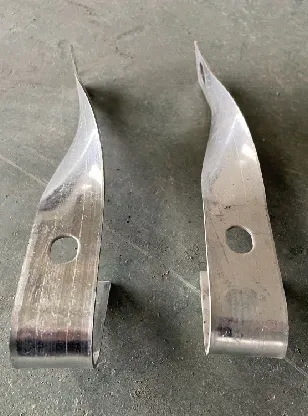loading...
- No. 9, Xingyuan South Street, Dongwaihuan Road, Zaoqiang County, Hengshui, Hebei, China
- admin@zjcomposites.com
- +86 15097380338
- Welcome to visit our website!
Factors Influencing Prices of FRP Vessels in Today's Market
Understanding FRP Vessel Prices Key Factors and Market Trends
Fiber Reinforced Polymer (FRP) vessels have gained significant popularity in various industries due to their unique properties, including lightweight, corrosion resistance, and high strength-to-weight ratios. As environmental awareness grows and industries seek more sustainable materials, the demand for FRP vessels has steadily increased. However, the pricing of these vessels can be complex and is influenced by various factors that potential buyers must understand.
The Composition and Manufacturing Process
One of the primary reasons for the pricing of FRP vessels is the composition of the materials used in their manufacturing. Typically, FRP is made from a combination of polymer resin and reinforcing fibers, often glass or carbon fibers. The type and quality of these raw materials greatly affect the cost. High-quality resins and fibers can substantially increase the price of the final product. Additionally, the manufacturing process, whether it be hand lay-up, filament winding, or pultrusion, also plays a role in pricing. Each of these methods has its own cost structures, with automated processes typically leading to lower prices due to higher production efficiency.
Size and Design Specifications
FRP vessels come in various sizes and designs to fit specific applications, from small tanks for chemical storage to large, custom-designed vessels for industrial processes. The larger and more complex the design, the higher the cost. Customization often involves additional engineering hours and resources, which can considerably inflate the price. Buyers should be prepared to invest more in tailored solutions that meet specific operational requirements.
Market Demand and Supply Dynamics
Like any commodity, the price of FRP vessels is subject to market demand and supply dynamics. The growing awareness of environmental considerations is prompting industries to switch from traditional materials, such as metal and concrete, to FRP. This increasing demand can lead to price inflation, especially if the supply chain experiences disruptions or raw material shortages. Conversely, if manufacturers increase production capacity or if new suppliers enter the market, prices may stabilize or decrease.
frp vessel price

Geographical Factors
Geographical location also impacts FRP vessel pricing. Regions with higher production costs, such as labor and overhead, will typically see higher prices for FRP products. Additionally, transportation costs can add to the final price, particularly for buyers located far from manufacturing facilities. Understanding the local market conditions and logistics can provide insights into potential price fluctuations.
Regulatory Standards and Certifications
In many industries, FRP vessels must comply with specific regulatory standards and certifications. The need to adhere to these regulations can increase manufacturing costs, impacting the price of the vessel. For instance, vessels used in the food processing or pharmaceutical sectors often require rigorous quality assurance processes and certifications that ensure compliance with health and safety standards. Consequently, buyers should be aware that opting for FRP vessels that comply with these stringent regulations may come at a premium.
Future Trends and Innovations
As technology advances, the FRP industry is expected to evolve, which may influence pricing trends. Innovations in manufacturing processes and the development of new composite materials can lead to cost reductions. Moreover, as recycling methods for FRP improve, this could lower material costs in the long run. Keeping an eye on these trends can provide buyers with insights into potential price changes and allow them to make more informed purchasing decisions.
Conclusion
In summary, the price of FRP vessels is influenced by a multitude of factors including material composition, manufacturing processes, size and design specifications, market dynamics, geographical location, and regulatory compliance. As the demand for sustainable solutions increases, understanding these factors becomes essential for buyers looking to invest in FRP vessels. By considering the implications of these variables, potential purchasers can navigate the complexities of the market and make informed decisions that best suit their operational needs and budget constraints. In a rapidly evolving industry, staying informed about market trends and technological advancements will be crucial for optimizing investments in FRP technology.
-
Why Choose a Galvanized Water Tank for Your Storage NeedsNewsMay.21,2025
-
The Strength and Durability of FRP GratingNewsMay.21,2025
-
The Importance of Water Treatment Systems for Clean and Safe WaterNewsMay.21,2025
-
The Advantages of FRP Rebar for Construction ProjectsNewsMay.21,2025
-
Say Goodbye to Hard Water with a Reliable Water SoftenerNewsMay.21,2025
-
Maximize Your Water Storage with a Sectional Water TankNewsMay.21,2025
-
The Power of Filter VesselsNewsMay.19,2025
